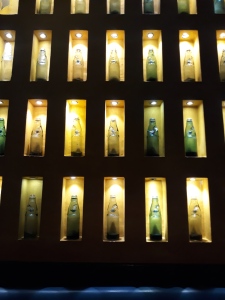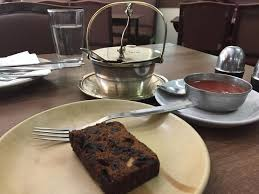
Indrani’s Inkblot
[1]
But my dear man, reality is only a Rorschach ink-blot, you know.’ Alan Watts, British philosopher.
With Christmas around the corner and houses and public buildings beginning to twinkle with Christmas lights, it’s timely to think about the symbology of light versus darkness and white versus black.
Most religions around the world including Christianity, Judaism, Buddhism, Hinduism, and Islam use light as part of their celebrations. They also use it in their symbology. Light is associated with good, knowledge, justice and wisdom. Conversely, darkness is associated with evil, ignorance, injustice and deception.
This simple opposition is also reflected in the white/black opposition, which is often applied to people of different hues to judge beauty, higher social status and moral superiority. Curiously, this is used not just by the pale-skinned but by dark-skinned communities as well.
These beliefs might have originated with the pale-skinned Aryans conquering the lands of dark-skinned peoples (and or?) with people of upper socio-economic strata having lighter complexions as they did not labour in the sun like those from lower socio-economic groups.
It may surprise some readers to know that black did not always have negative connotations. Ancient Egyptians regarded black as a good colour, providing protection against death and evil. The ancient Germanic tribes regarded ravens and crows as sacred and worshipped Nótt, goddess of the night. Even today, many Hindus worship the dark goddess Kali who is the destroyer of evil.
We don’t quite know who started the association of black with evil and sad events that is common in many countries. However, this practice is by no means universal.
Yes, black is the colour of funerals and widowhood for many people, for example, those from Christian and Muslim backgrounds.
But it is also the colour of the traditional garments worn by many Christian priests and nuns and some orthodox Jews in everyday life and festivals. Classical Western musicians, lawyers and judges, and people attending a formal event also wear black. It is the little black cocktail dress that is considered the epitome of sophisticated evening wear!
Conversely, people from some Hindu and Sikh groups wear white for funerals, and widows may be dressed in white garments.
The association of night time with evil is not surprising as humans are not a nocturnal species and less able to see where danger lurks in the dark. However, the invention of various means of lighting houses, streets and public spaces make this less relevant.
Taoism teaches that opposites are necessary for harmony to exits.
If we did not have night, it would be difficult to sleep, to see the moon, comets and stars. How would we appreciate the bright lights of the buildings lit up to celebrate festivals and events? Light pollution is now recognised as detrimental to the health of urban wildlife.
So, it might be time to rethink our symbology?
I end with these beautiful lines by Walt Whitman and a lovely photograph from Nick Uwour:
“Day full-blown and splendid-day of the immense sun, action, ambition, laughter, The Night follows close with millions of suns, and sleep and restoring darkness.”[2]

[1] Image of inkblot: Unsplash, Nicolas Thomas@nicholasthomas
[2] Walt Whitman, https://quotefancy.com/quote/930817/Walt-Whitman-Day-full-blown-and-splendid-day-of-the-immense-sun-action-ambition-laughter
First published in SCOPE Magazine of the Fellowship of Australian Writers Queensland December 2021


























